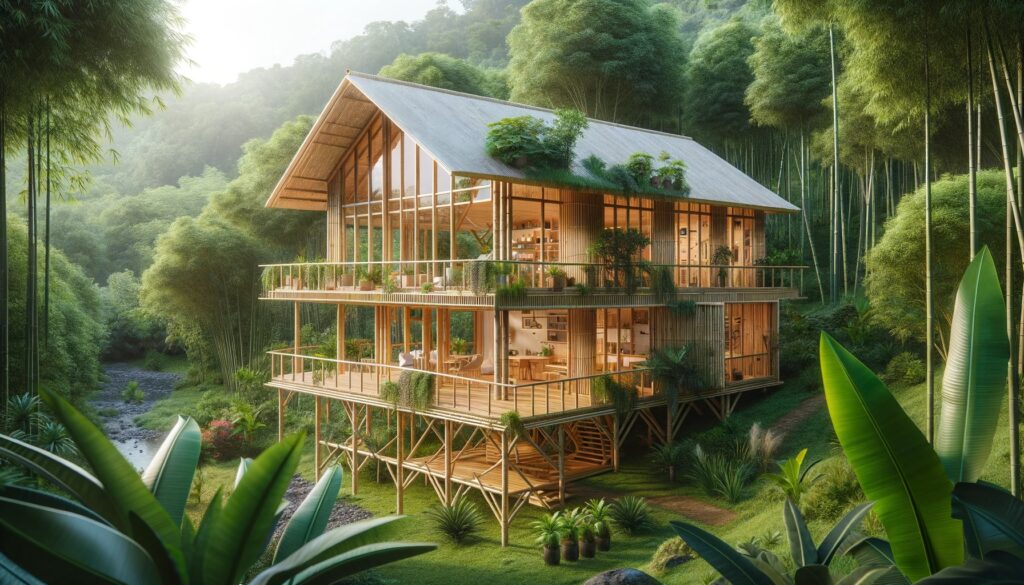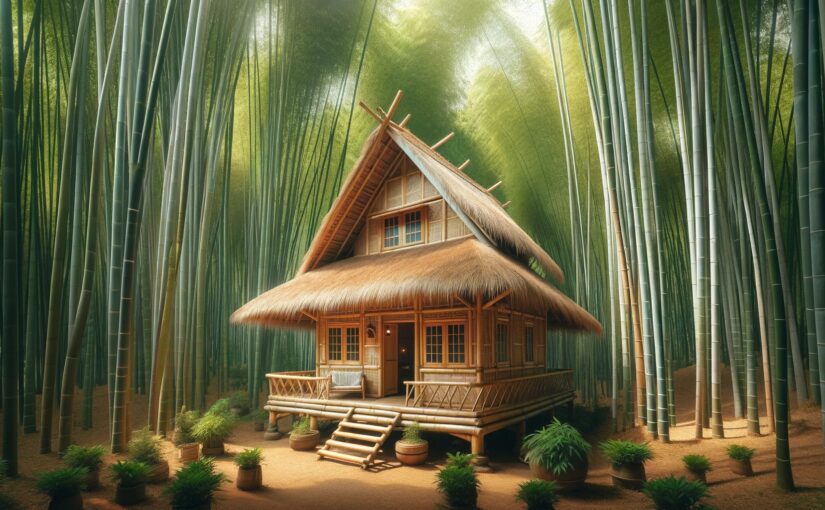In sustainable architecture, bamboo stands tall and proud, not just as a plant but as a symbol of resilience, flexibility, and green innovation. This miraculous material, often referred to as “Green Gold,” has a history as rich and as versatile as its applications in the modern building industry. From ancient houses on stilts to avant-garde eco-friendly skyscrapers, bamboo’s journey through the ages is a testament to its enduring appeal and increasing relevance in our quest for environmental sustainability.
The Roots of Bamboo in Construction
The story of bamboo in construction is as old as civilization itself. For thousands of years, it has been used by various cultures, especially in Asia and South America. Bamboo’s natural abundance, rapid growth rate, and impressive strength-to-weight ratio made it an ideal building material for ancient communities. Its first recorded use dates back to ancient China, where it was employed not only in building homes but also in creating tools and weapons, showcasing its versatility and strength.
Bamboo’s Renaissance in Modern Architecture
Fast forward to the 21st century, and bamboo is experiencing a renaissance, thanks to its eco-friendly credentials. In an era where sustainability is not just a buzzword but a necessity, bamboo emerges as a champion of green building materials. It absorbs carbon dioxide at a higher rate than some trees releases more oxygen, and its cultivation does not require pesticides or much water, making it a poster child for environmental sustainability.
Contemporary architects and designers are pushing the boundaries of bamboo, using it in everything from residential homes to public buildings and luxury resorts. Its flexibility and tensile strength have inspired innovative designs that challenge traditional architectural concepts, proving that sustainability and beauty can go hand in hand.

Pros of Bamboo as a Building Material
- Sustainability
Bamboo grows rapidly. It reaches maturity in just 3 to 5 years compared to hardwoods which may take 20 to 50 years. This makes it a highly renewable resource. - Strength and Flexibility
Bamboo has a higher strength-to-weight ratio than many woods. Its natural flexibility allows it to withstand earthquakes and strong winds, making it ideal for construction in prone areas. - Carbon Sequestration
Bamboo forests absorb carbon dioxide. They produce up to 35% more oxygen than an equivalent stand of trees. This is making bamboo constructions carbon-neutral or even carbon-negative.
Cons of Bamboo as a Building Material
- Maintenance and Durability
Without proper treatment, bamboo can be susceptible to decay and insect infestations. Modern processing techniques can mitigate these issues, but they require knowledge and diligence. - Cultural and Market Acceptance
Despite its benefits, it still faces resistance in some markets where traditional building materials like concrete and steel dominate. Changing perceptions is a gradual process. - Logistical Challenges
While bamboo is lightweight and easy to transport, its length and flexibility can pose challenges in handling and transportation. Therefore, requiring specialized logistics solutions.
Environmental Benefits Beyond Construction
Beyond its direct applications in construction, it offers broader environmental benefits. It can be used to restore degraded lands and prevent soil erosion thanks to its extensive root system. Moreover, bamboo plantations can serve as a rapid and effective carbon sink, playing a crucial role in combating climate change.
In conclusion, bamboo’s historic and modern applications in construction underscore its potential as a sustainable building material. While there are challenges to its widespread adoption, the benefits it offers for the environment and for innovative architectural design are undeniable. As we continue to search for solutions to the pressing environmental issues, bamboo stands ready, as it has for millennia, to offer its strength, flexibility, and green credentials to the cause. It is not just a material of the past; it is a beacon for the future of sustainable construction.

One thought on “Bamboo: The Green Gold of Architecture”